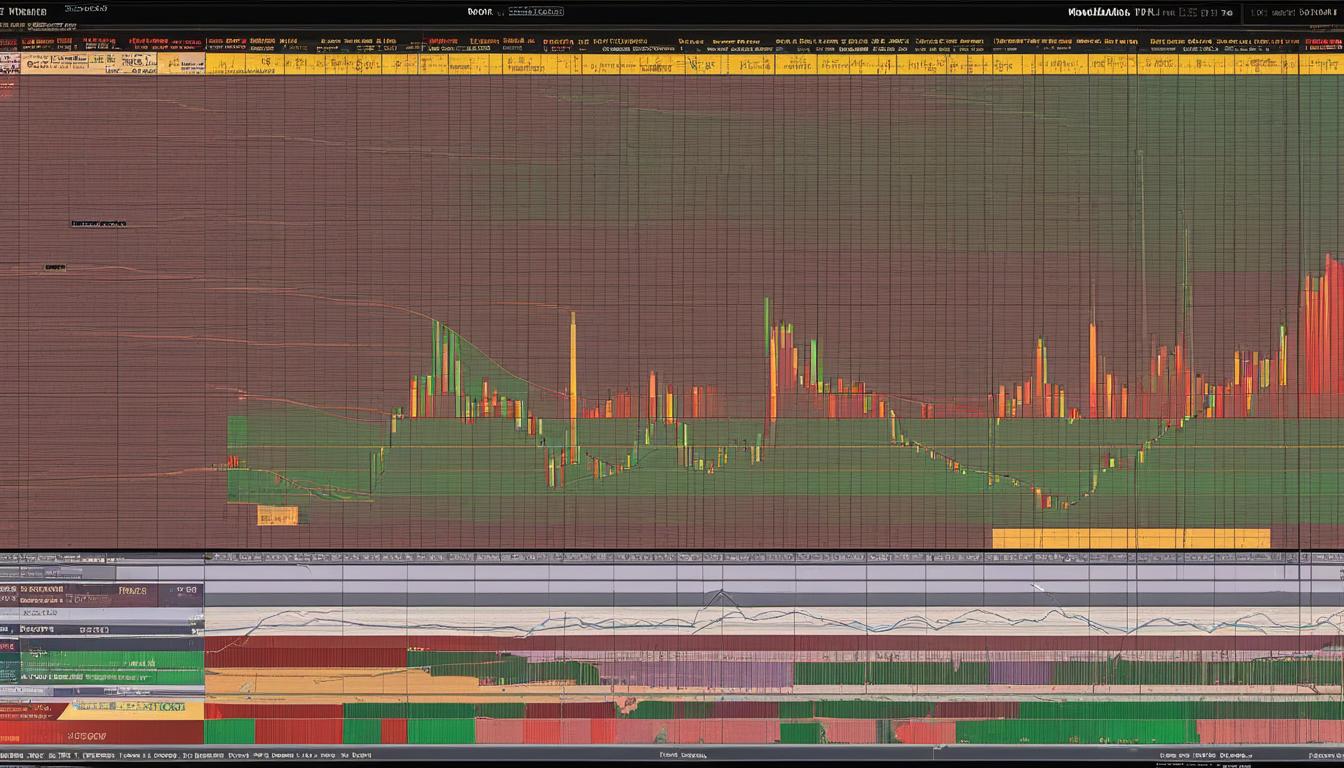Broker Errors: Types, Examples, Consequences
Broker errors can have serious consequences for your investments. Understanding the types of errors that brokers can make, as well as their potential impact, is crucial for protecting your portfolio. Broker negligence and misconduct are common mistakes made by brokers that can lead to financial losses for clients. It is important to be aware of these errors and take steps to avoid them.
Key Takeaways:
- Broker errors can have significant consequences for investors.
- Understanding the types of errors that brokers can make is essential for protecting your portfolio.
- Broker negligence and misconduct are common mistakes that can lead to financial losses.
- Being proactive and taking steps to avoid broker errors is crucial.
- Staying informed and implementing effective prevention methods can help safeguard your investments.
Types of Broker Errors
When it comes to investing, it’s important to be aware of the common mistakes made by brokers and take steps to prevent them. By understanding the types of broker errors that can occur, investors can proactively protect their portfolios. Here are some of the most common types of broker errors:
- Misrepresentation of information: Brokers may provide inaccurate or misleading information about investments, potentially leading to poor decision-making.
- Failure to follow client instructions: Brokers may not execute trades or investment strategies as instructed by their clients, leading to missed opportunities or unwanted risks.
- Unauthorized trading: Brokers may make trades on behalf of clients without their consent, potentially resulting in financial losses.
- Improper handling of client funds: Brokers may mishandle or misappropriate client funds, leading to the loss of assets or unauthorized transactions.
To prevent these types of broker errors, it’s crucial for investors to maintain open communication with their brokers and conduct thorough research before making investment decisions. Additionally, monitoring transactions and account activity closely can help identify any potential errors or discrepancies. By taking these preventive measures, investors can minimize the risk of falling victim to broker errors and protect their investments.
| Error Type | Description |
|---|---|
| Misrepresentation of information | Brokers provide inaccurate or misleading information about investments |
| Failure to follow client instructions | Brokers do not execute trades or investment strategies as instructed by clients |
| Unauthorized trading | Brokers make trades on behalf of clients without their consent |
| Improper handling of client funds | Brokers mishandle or misappropriate client funds |
By being aware of these common mistakes made by brokers and taking preventive measures, investors can safeguard their portfolios and minimize the risk of financial losses.
Examples of Broker Errors
Understanding the various examples of broker errors is essential for investors to be vigilant in identifying and addressing potential issues. Here are some common examples:
Providing inaccurate financial advice: Brokers may give incorrect or misleading information regarding investment opportunities, leading clients to make uninformed decisions.
Mistakes in trading orders: Brokers can make errors when executing trades on behalf of clients, such as entering incorrect quantities or prices, which can result in significant financial losses.
Mishandling client funds: Broker errors can include improper handling of client funds, such as commingling them with personal accounts or failing to properly manage and safeguard client assets.
Failing to disclose important information to clients: Brokers have a duty to provide clients with all relevant information about investments, including potential risks and conflicts of interest. Failing to disclose such information can be a serious breach of trust.
By being aware of these examples, investors can be better equipped to identify potential broker errors and take appropriate action to protect their investments.
| Error Types | Examples |
|---|---|
| Misrepresentation of information | Providing inaccurate financial advice |
| Failure to follow client instructions | Mistakes in trading orders |
| Unauthorized trading | N/A |
| Improper handling of client funds | Mishandling client funds |
| Failure to disclose important information | Failing to disclose important information to clients |
As shown in the table, unauthorized trading does not have a specific example as it is not common, but it is still a potential broker error that investors should be aware of. By understanding these examples and staying vigilant, investors can minimize the risk of falling victim to broker errors.
Consequences of Broker Errors
Broker errors can have severe consequences that can impact investors both financially and legally. It is crucial for investors to understand these consequences and be prepared to take appropriate action to mitigate any potential damage. Here are some of the key consequences of broker errors:
Financial Losses:
One of the most immediate and significant consequences of broker errors is the potential for financial losses. When brokers make mistakes, such as unauthorized trading or mishandling client funds, it can result in direct financial harm to investors. These losses can be devastating and can take a significant amount of time and effort to recoup.
Damage to Portfolio:
Broker errors can also cause damage to an investor’s portfolio. For example, if a broker provides inaccurate financial advice or makes mistakes in trading orders, it can lead to poor investment decisions and negatively affect the overall performance of the portfolio. This damage can be long-lasting and may require careful portfolio management to recover from.
Legal Disputes:
In some cases, broker errors can escalate to legal disputes between investors and their brokers. When investors believe they have been harmed as a result of broker negligence or misconduct, they may take legal action to seek compensation for their losses. Legal disputes can be costly, time-consuming, and emotionally draining for all parties involved.
To minimize the consequences of broker errors, investors should take prompt action when they suspect an error has occurred. This may involve contacting the broker to address the issue, seeking assistance from regulatory authorities, or even consulting with legal professionals to explore potential recourse options. Additionally, implementing effective broker error prevention methods, such as thorough due diligence and consistent monitoring of investment accounts, can help reduce the likelihood of errors occurring in the first place.
| Consequences of Broker Errors | Description |
|---|---|
| Financial Losses | Potential for direct financial harm to investors |
| Damage to Portfolio | Negative impact on the overall performance of an investor’s portfolio |
| Legal Disputes | Potential escalation to legal action between investors and brokers |
Protecting Yourself from Broker Errors
Protecting yourself from broker errors is essential for safeguarding your investments. By taking proactive measures and staying informed about broker error prevention methods, you can minimize the potential risks associated with working with a broker. Here are some steps you can take to avoid broker errors:
- Conduct thorough due diligence: Before choosing a broker, thoroughly research their background and qualifications. Look for any past disciplinary actions or complaints filed against them. Additionally, seek recommendations from trusted sources, such as financial advisors or friends who have had positive experiences with brokers.
- Closely monitor your investment accounts: Regularly review your investment statements and trade confirmations to ensure accuracy. Pay close attention to any suspicious activities, such as unauthorized trading or discrepancies in account balances. Promptly report any errors or concerns to your broker and document all communication for future reference.
- Maintain open lines of communication: Establish clear and open communication channels with your broker. Regularly communicate your investment goals, risk tolerance, and any specific instructions or preferences you may have. This will help ensure that your broker is better equipped to meet your individual needs and reduce the likelihood of misunderstandings or mistakes.
- Stay informed about regulations and guidelines: Familiarize yourself with the laws and regulations governing broker-client relationships. This includes understanding your rights as an investor, the obligations of brokers, and the procedures for resolving disputes. Staying informed will empower you to make informed decisions and take appropriate action if necessary.
By following these guidelines, you can enhance your ability to protect yourself from broker errors and minimize potential financial risks. Remember, staying proactive and vigilant is key to maintaining a strong and secure investment portfolio.
| Common Broker Error Prevention Methods | |
|---|---|
| Thorough due diligence | Conduct research on broker’s background and qualifications |
| Closely monitor accounts | Review investment statements and trade confirmations regularly |
| Maintain open communication | Establish clear lines of communication with your broker |
| Stay informed about regulations | Be aware of laws and regulations governing broker-client relationships |
Conclusion
The occurrence of broker errors, such as broker misconduct and negligence, can have significant implications for investors. To protect your investments, it is crucial to understand the different types of errors that brokers can make and the potential consequences they may entail.
By staying informed and implementing effective prevention methods, investors can mitigate the risks associated with broker errors. Thorough due diligence and careful monitoring of investment accounts can help identify and address any potential errors promptly.
Additionally, maintaining open lines of communication with brokers and being aware of your rights as an investor are essential for avoiding pitfalls in broker-client relationships. Familiarizing yourself with the regulations and guidelines governing these relationships can provide an added layer of protection.
In conclusion, being proactive and vigilant in safeguarding your investments against broker errors is of utmost importance. By taking the necessary steps to prevent these errors and staying informed, you can navigate the complexities of the financial market with confidence and protect your portfolio from the potential damages that broker misconduct and negligence can cause.
FAQ
What are some common types of broker errors?
Common types of broker errors include misrepresentation of information, failure to follow client instructions, unauthorized trading, and improper handling of client funds.
How can investors prevent broker errors?
Investors can prevent broker errors by maintaining open communication with brokers, conducting thorough research before choosing a broker, and carefully monitoring their investment accounts.
What are some examples of broker errors?
Examples of broker errors include providing inaccurate financial advice, making mistakes in trading orders, mishandling client funds, and failing to disclose important information to clients.
What are the consequences of broker errors?
The consequences of broker errors can include financial losses, damage to portfolios, and even legal disputes for investors.
How can investors protect themselves from broker errors?
Investors can protect themselves from broker errors by understanding their rights, staying informed about regulations and guidelines, and implementing effective broker error prevention methods.







